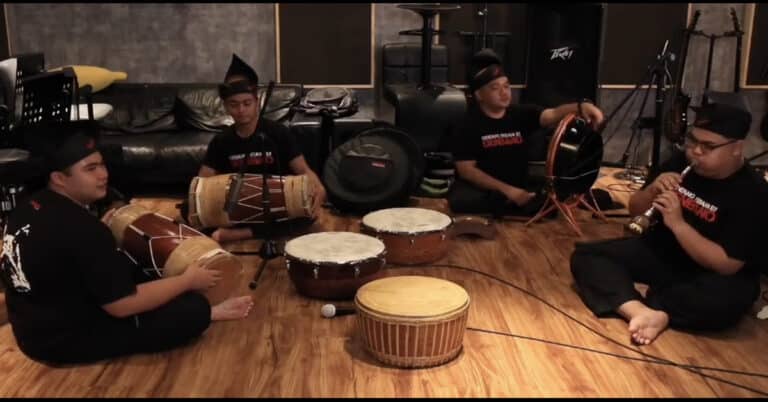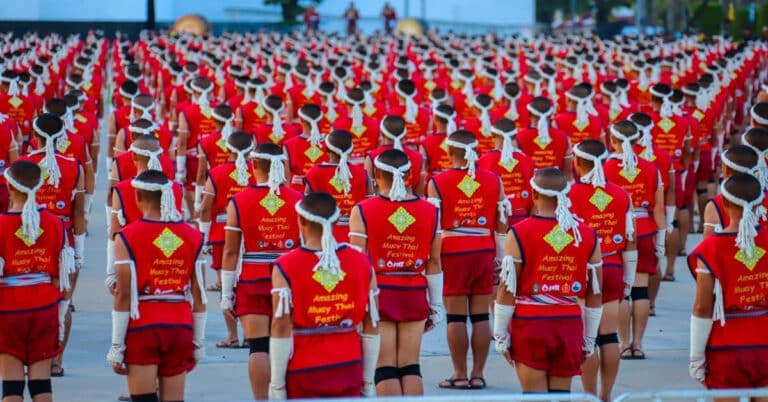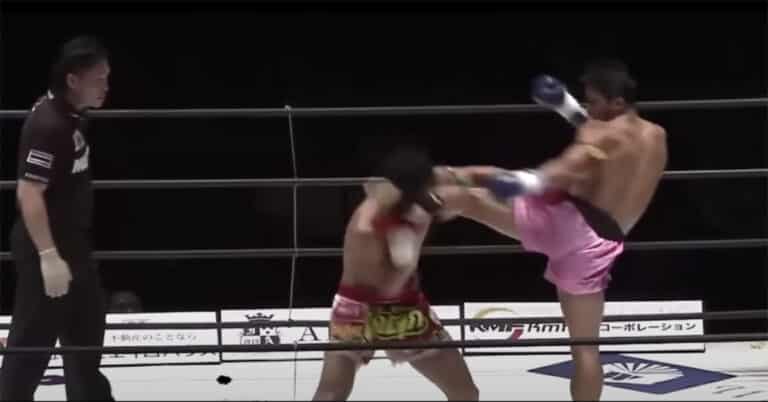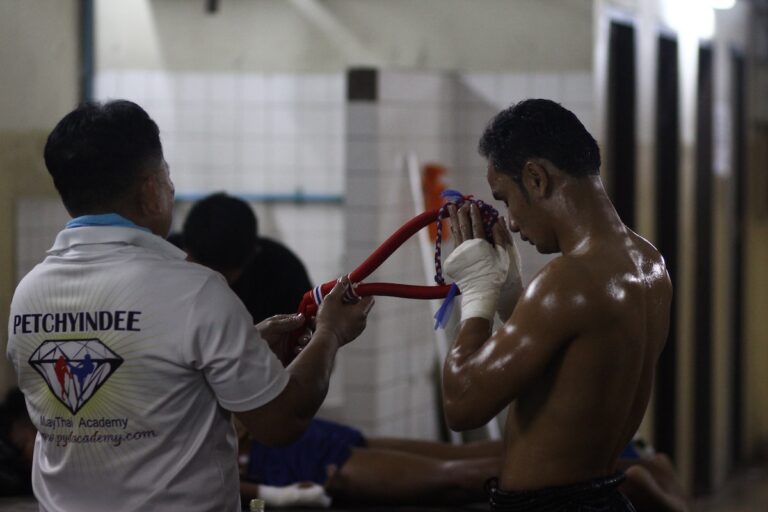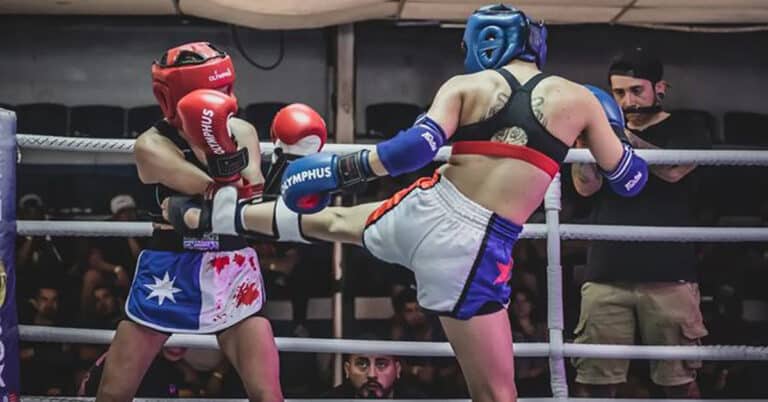Muay Thai Scoring System – How Does Muay Thai Judging Work?
The Muay Thai scoring system can be complex and controversial. Many outsiders struggle to understand what judges in Muay Thai are looking for. While it is effective striking and aggression, it’s also posturing and body language,
The judging and Muay Thai scoring system of combat sports is complex, with different criteria used for different martial arts. Judging Muay Thai is going to be different than judging and scoring in MMA or boxing. Even across different organizations, the Muay Thai scoring system criteria can vary.
This text provides an analysis of the Muay Thai scoring system used in Muay Thai and MMA and illustrates how these systems are employed in various fighting platforms, including ONE Championship and Stadium Muay Thai. If you’ve ever been curious about Muay Thai judging and how the Muay Thai scoring system works, then you’re in the right place.
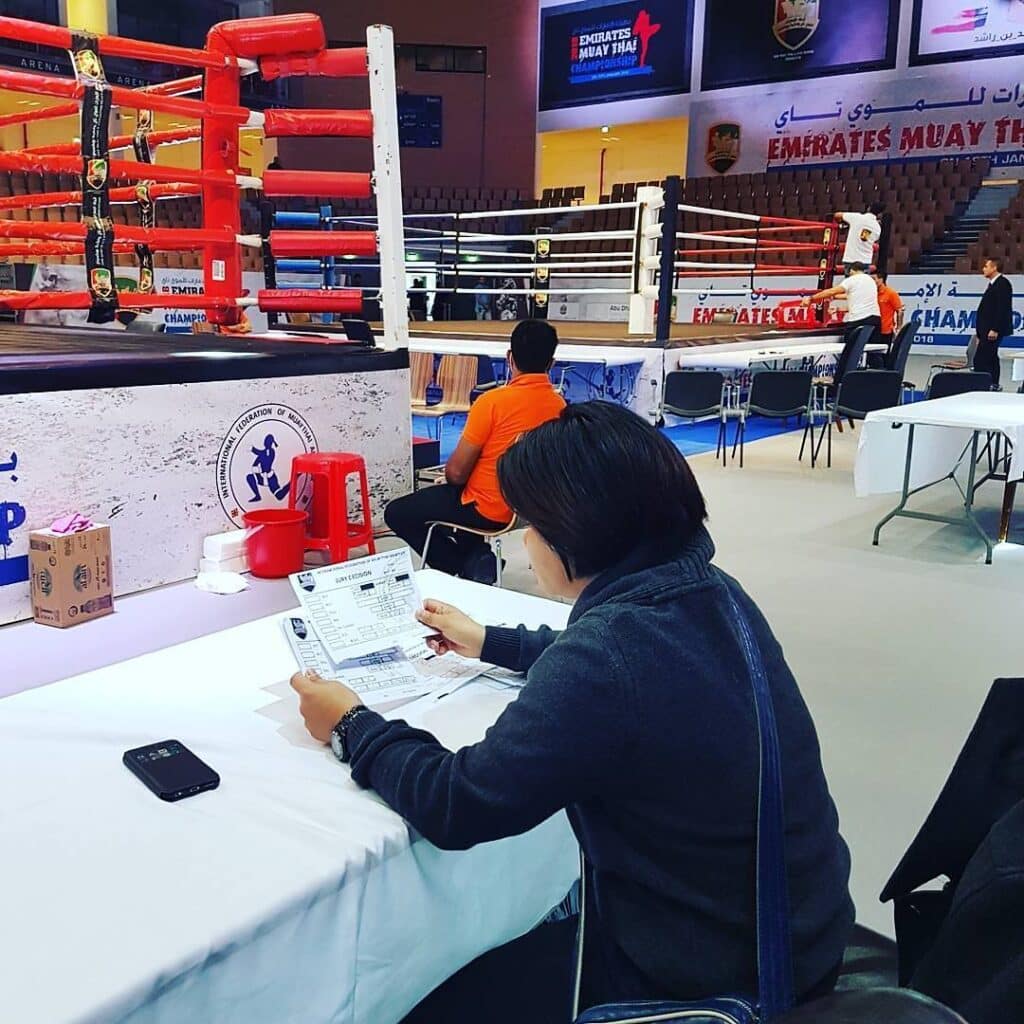
Muay Thai Scoring System
Here’s a comprehensive explanation of the Muay Thai scoring system. This is the the most common and consistent criterion across different organizations both internationally and in Stadium Muay Thai.
Key Criteria for Judging
- Effective Strikes: Clean, powerful strikes using all weapons (hands, kicks, elbows, knees) that inflict damage or throw the opponent off-balance are crucial in the Muay Thai scoring system.
- Aggression: Pushing the pace and forcing the action can earn points, but it’s not as valued as effective striking.
- Ring Control & Dominance: Ability to control the opponent and set the tempo, including defusing attacks and showing dominance with sweeps and counter moves.
Aggression or the act of pressing the action is considered, but it’s not as weighted as effective striking in the Muay Thai scoring system. A fighter’s ability to control the ring and display dominance, both through technical superiority also plays a role in scoring.
Judges in Muay Thai maintain a mental scorecard, constantly assessing who is leading and by what margin. This holistic approach to scoring creates scenarios where a fighter who has won more rounds may not necessarily be the victor if the opponent’s performance in their winning rounds was significantly dominant.
Depending on the organization, Muay Thai can be judged Round-by-Round or overall. Depending on where a Nak Muay competed, Muay Thai judging will be different. Some places look at an overall fight to judge as a whole. While others use round-by-round scoring.
Striking
- Quality Over Quantity: Emphasis on the effectiveness of strikes, not just the number.
- Type of Strikes: Kicks and knees are more favored than punches but all count when effectively used.
The primary focus is on effective strikes – those that are clean, powerful, and utilize the fighter’s full arsenal of weapons including hands, feet/shins, elbows, and knees. Quality is ranked over quantity, and the impact of the strikes, particularly those that throw an opponent off-balance or inflict significant damage, are highly valued when it comes to the Muay Thai scoring system.
Additionally, some techniques will score higher than others. However, it is not clear what techniques are highly rated. But Nak Muays are aware that some strikes and attacks are considered better than others.
To add to the confusion, in Stadium Muay Thai blocked strikes, especially kicks, can be included as landed strikes when it comes to judging. A fighter should aim to dodge kicks rather than block, as a judge would prefer that.
Specific Muay Thai Scoring System Criteria from the Thai Boxing Board of Sport
- Clean Muay Thai Weapons Strikes: Emphasis on clean strikes and the ability to unbalance the opponent.
- Heavy Powerful Attacks: Focus on strikes that show a noticeable effect on the opponent.
- Damage Inflicted: If all else is equal, the fighter who inflicts more damage wins.
- Attacking Techniques: More aggressive fighters are favored if other criteria are matched.
- Skills: Both offensive and defensive skills, including evasion and counterattacking, are considered.
- Fouls: The fighter who commits fewer fouls is favored.
The scoring criteria for Muay Thai judging, as laid out by the Thai Boxing Board of Sport, underline the importance of clean strikes with Muay Thai weapons which is to judge effective striking. The fighter’s skill in both offensive and defensive maneuvers, their ability to control the action and the ring, and the level of determined aggression exhibited, are all evaluated as well in the Muay Thai scoring system.
What about Rounds Dynamics?
- First Round: Fighters size each other up, usually less aggressive.
- Last Round: Often toned down as fighters believe the winner is decided; can include a “dance-off”.
- Action Peaks: Most actions occur in rounds 3 & 4.
Muay Thai fights often feature a distinctive dynamic across rounds. The first round typically sees fighters sizing each other up, with aggressive exchanges being a rarity. The bulk of the action transpires in rounds 3 and 4. While the final round often mirrors the first in its subdued nature. Especially if one fighter believes they have already secured a victory.
This factor still persists to this day but many Muay Thai organizations have attempted to remove this facet. In some stadium Muay Thai organizations fighters can be penalized for stalling during rounds. The fifth-round dance, which used to be common, will vary by what organization and Stadium one is competing in. If you are penalized, it will affect how it is weighted for the Muay Thai scoring system negatively.
What about Posturing and Body Language
Posturing and body language can be included as a factor. This can often be the most misunderstood and controversial factor of the Muay Thai scoring system. If a fighter looks like they are winning, through body language, the round or fight can often be scored in the favor.
This is to make it look as though your opponents’ strikes are not hurting you, and your body language should look like you are in control of the fight. If you look like you’re gasping for air, and each shot lands, while you look panicked, some judges will score the fight against you.
However, including posturing and body language in the Muay Thai scoring system is not consistent across all organizations. For many, it’s a non-factor while for others it is heavily weighted.

Muay Thai Judging in ONE Championship
The above discusses how the Muay Thai scoring system is used in the Stadium scene. Muay Thai judging in ONE Championship is slightly different.
- Round by Round: In ONE championship Muay Thai, fights are judged round by round using a 10-point must basis. Rather than looking at the fight as a whole.
- Closer to a KO: In ONE Championship, the primary criteria used to judge fights is who was closest to finishing the fight by way of knockout. This is the most heavily weighted factor in ONE judging. This is then followed by things such as striking volume and aggression.
Muay Thai Judging vs. MMA Judging
Here’s a comparison between the judging criteria for the Muay Thai scoring system and MMA:
Muay Thai Judging:
- Effective Striking: The primary focus is on the quality of strikes, especially those that are clean, powerful, and destabilize the opponent. Strikes using the full range of Muay Thai weapons (hands, feet/shins, elbows, knees) are considered.
- Aggression and Ring Control: These are secondary factors. A fighter’s ability to control the tempo and display dominance, both through technical skill and psychological tactics, is considered.
- Rounds Dynamics: Different rounds have distinct characteristics. The first and last rounds are often less aggressive, with most action occurring in the middle rounds. This is not always consistent across each Muay Thai organization.
- Mental Scorecard: Judges maintain a mental tally of who is leading and adjust their assessment continuously throughout the fight for Muay Thai judging.
MMA Judging:
- Effective Damage: Like Muay Thai, effective striking and damage inflicted play a significant role. However, MMA also considers the effectiveness of grappling and submission attempts.
- Criteria: Judges consider striking, grappling, control of the fighting area, effective aggressiveness, and defense.
- Ground Game: MMA incorporates a significant focus on the ground game. Takedowns, submission attempts, and control on the ground are crucial factors in scoring.
- Consistency Across Rounds: Each round is scored independently, and there’s less emphasis on the fight’s overall narrative. The consistent performance in each round is vital.
Similarities Between MMA and Muay Thai Judging
While Muay Thai and MMA have distinct judging criteria, they also share several similarities in terms of how fights are evaluated. Here are some of the parallels:
- Effective Striking: The effectiveness, power, and precision of strikes are fundamental in both Muay Thai judging and MMA.
- Aggression and Damage: Aggression and the ability to inflict visible damage influence scoring in both sports.
- Control and Defense: In both Muay Thai and MMA, the ability to control the opponent and exhibit effective defensive skills plays a role in the fighters’ scores.
- Multi-Dimensional Evaluation: Judges in both sports assess a combination of factors, including striking, aggression, control, and defense, to determine the winner.
Effective Striking
In Muay Thai judging, the emphasis lies on the quality, power, and impact of strikes, including the use of various “weapons” like fists, elbows, knees, and kicks. MMA, too, values striking, incorporating it alongside other combat elements like grappling and submissions. The effectiveness of strikes remains pivotal in both sports. The impact and effectiveness are key, not volume, for each of MMA and Muay Thai.
Aggression
Aggression plays a role in both Muay Thai and MMA scoring. It is not the key decider in a fight, just one of the tools used. Effective striking is considered more important, however, if that is even then a judge would take aggression into consideration. But, aggression is not more important than striking. The more aggressive fighter can still lose the round or fight if they are losing the striking battle.
Final Thoughts
The Muay Thai scoring system and judging can be complex and confusing. Organizations within Thailand and neighboring Stadiums will have different scoring criteria. Posturing, body language, round-by-round, and round dynamics all vary depending on what stadium and organization a Nak Muay is fighting in.
However, across all organizations and Stadiums, the paramount key to Muay Thai judging is effective striking. This is striking that shows the clearest impact on the fight. If that factor is equal, then aggression and control are taken into account but are not more important than striking impact.


